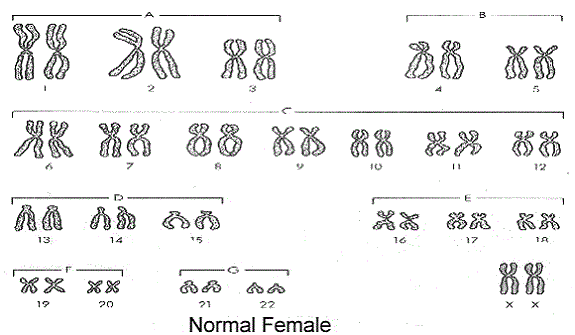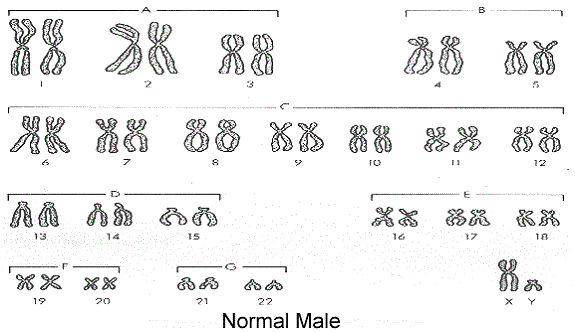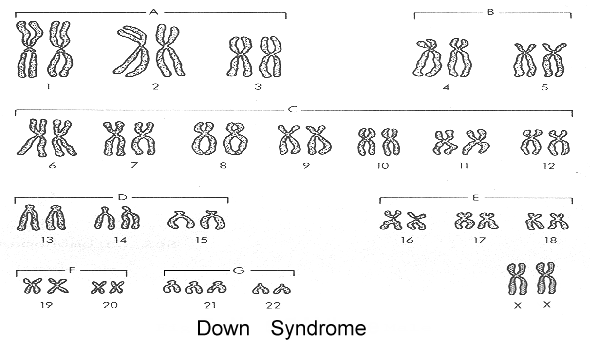Chapter 6
Why Cells Divide:
- growth and repair
- creation of gametes (sex cells)
- method of reproduction in unicellular organisms
Binary Fission - type of reproduction that occurs in bacterial cells, single celled organism splits and becomes two identical organisms
Chromosomes and
DNA
Chromosomes are DNA wrapped around proteins to form an X-shaped structure.
The diagram will help you see the relationship.
1. Chromosomes are found in
the nucleus
2. Chromosomes are made of DNA
3. Sections of chromosomes are called genes
DNA - deoxyribonucleic acid (it is the genetic code that contains all the information needed to build and maintain an organism)
Chromosome Structure

Chromosome Numbers
Each organism has a distinct number of chromosomes, in humans, every cell contains 46 chromosomes. Other organisms have different numbers, for instance, a dog has 78 chromosomes per cell.
Somatic Cells - body cells, such as muscle, skin, blood ...etc. These cells contain a complete set of chromosomes (46 in humans) and are called DIPLOID.
Sex Cells - also known as gametes. These cells contain half the number of chromosomes as body cells and are called HAPLOID
Chromosomes come in pairs, called Homologous Pairs (or homologs). Imagine homologs as a matching set, but they are not exacly alike, like a pair of shoes.
Diploid cells have 23 homologous pairs = total of 46
Haploid cells have 23 chromosomes (that are not paired) = total of 23

![]() Homologous
Chromosomes
Homologous
Chromosomes
Sex Determination
Chromosomes determine the sex of an offspring. In humans, a pair of chromosomes called SEX CHROMOSOMES determine the sex.
If you have XX sex chromosomes - you are female
If you have XY sex chromosomes - you are male
During fertilization, sperm cells will either contain an X or a Y chromosome (in addition to 22 other chromosomes - total of 23). If a sperm containing an X chromosome fertilizes an egg, the offspring will be female. If a sperm cell containing a Y chromosome fertilizes an egg, the offspring will be male.
Creation of a Zygote
When two sex cells, or gametes come together, the resulting fertilized egg is called a ZYGOTE
Zygotes are diploid and have the total 46 chromosomes (in humans)
Karyotype
A karyotype is a picture of a person's (or fetus) chromosomes. A karyotype is often done to determine if the offspring has the correct number of chromosomes. An incorrect number of chromosomes indicates that the child will have a condition, like Down Syndrome
Compare the Karyotypes below



Notice that a person with Down Syndrome has an extra chromosome #21. Instead of a pair, this person has 3 chromosomes - a condition called TRISOMY (tri = three)
Trisomy results when chromosomes fail to separate - NONDISJUNCTION - when sex cells are created. The resulting egg or sperm has 24 instead of the normal 23.
Other conditions result from having the wrong number of chromosomes:
Klinefelters Syndrome - XXY (sex chromosomes)
Edward Syndrome - Trisomy of chromosome #13
**Try constructing
your own Karyotype at
http://www.biology.washington.edu/karyotyping/karyotypeSample1.html
Go to the Cell Cycle